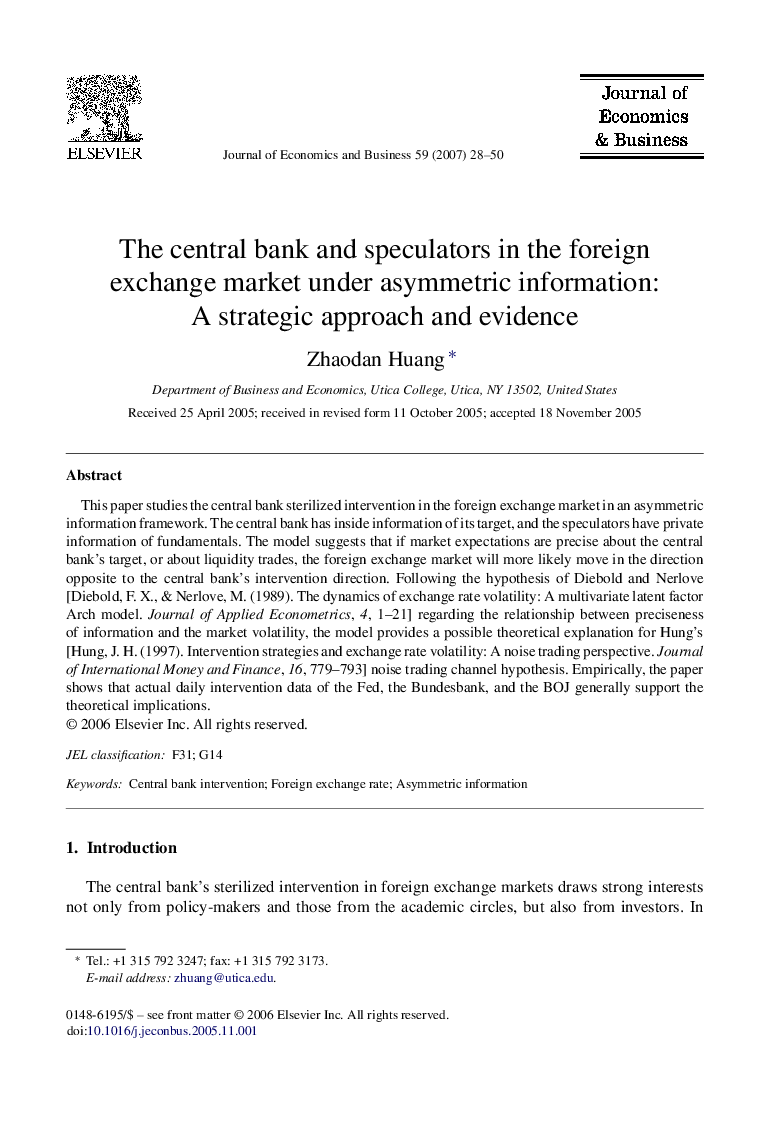| Article ID | Journal | Published Year | Pages | File Type |
|---|---|---|---|---|
| 958016 | Journal of Economics and Business | 2007 | 23 Pages |
This paper studies the central bank sterilized intervention in the foreign exchange market in an asymmetric information framework. The central bank has inside information of its target, and the speculators have private information of fundamentals. The model suggests that if market expectations are precise about the central bank's target, or about liquidity trades, the foreign exchange market will more likely move in the direction opposite to the central bank's intervention direction. Following the hypothesis of Diebold and Nerlove [Diebold, F. X., & Nerlove, M. (1989). The dynamics of exchange rate volatility: A multivariate latent factor Arch model. Journal of Applied Econometrics, 4, 1–21] regarding the relationship between preciseness of information and the market volatility, the model provides a possible theoretical explanation for Hung's [Hung, J. H. (1997). Intervention strategies and exchange rate volatility: A noise trading perspective. Journal of International Money and Finance, 16, 779–793] noise trading channel hypothesis. Empirically, the paper shows that actual daily intervention data of the Fed, the Bundesbank, and the BOJ generally support the theoretical implications.
